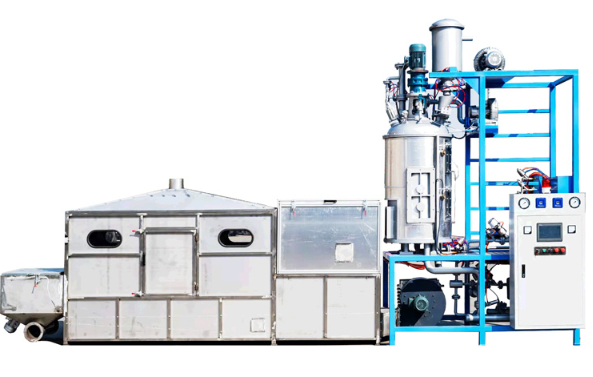- English
- Español
- Português
- русский
- Français
- 日本語
- Deutsch
- tiếng Việt
- Italiano
- Nederlands
- ภาษาไทย
- Polski
- 한국어
- Svenska
- magyar
- Malay
- বাংলা ভাষার
- Dansk
- Suomi
- हिन्दी
- Pilipino
- Türkçe
- Gaeilge
- العربية
- Indonesia
- Norsk
- تمل
- český
- ελληνικά
- український
- Javanese
- فارسی
- தமிழ்
- తెలుగు
- नेपाली
- Burmese
- български
- ລາວ
- Latine
- Қазақша
- Euskal
- Azərbaycan
- Slovenský jazyk
- Македонски
- Lietuvos
- Eesti Keel
- Română
- Slovenski
- मराठी
- Srpski језик
Physical properties of EPS
2022-02-11
The density of 1.1
The density of EPS is determined by the expansion multiple of polystyrene particles in the forming stage, which is generally between 10~45㎏/m3, and the apparent density of EPS used in engineering is generally 15~30㎏/m3. At present, the EPS density as a lightweight filler in road engineering is 20㎏/m3, 1%~2% of the ordinary road filler. Density is an important index of EPS, and its mechanical properties are almost proportional to its density.
1.2 Deformation characteristics
According to the test, the compression process of EPS under triaxial stress state and uniaxial stress state is basically similar. When the axial strain εa=5%, the stress-strain curve turns obviously and EPS begins to show elastic-plastic behavior. When the confining pressure is very small, the effect on the stress-strain relationship and yield strength is limited. When the confining pressure exceeds 60KPa, the yield strength decreases obviously, which is obviously different from that of soil. When the axial strain ε A ≤5%, no matter how big the confining pressure is, the volume strain εv is close to the axial strain ε A, that is, EPS lateral deformation is small, that is, poisson's ratio is small.

The elastic modulus Es of EPS with bulk density γ=0.2~0.4kN/m3 is between 2.5~11.5MPa. The filling height of EPS in approach project of Danao River Bridge in Guangdong province is over 4m, and the EPS bulk density used is 0.2kN/m3. In order to minimize post-construction settlement, 1.2m of soil was filled on the EPS material layer after it was laid. The average compression settlement of EPS material layer is 32mm, the elastic modulus of EPS can be calculated as 2.4mpa, and EPS material is still in the stage of elastic deformation. This section of road was opened to traffic in October, 2000. Six months later, the average value of the actual compression change of EPS material layer is 8mm, indicating that EPS material is successful as embankment filler in terms of the practical effect.
1.3 independence
EPS has strong independence, which is very beneficial to the stability of high slope. According to the Swedish bridge design code, the active and static side pressure coefficients are 0 and 0.4 respectively, so there is no need to calculate the passive side pressure. Because EPS produces small lateral pressure after vertical compression, the use of EPS as subgrade filler in bridge head segment can greatly reduce the earth pressure behind the abutment, which is very beneficial to the stability of the abutment.
The friction coefficient f between EPS block and sand is 0.58(dense)~0.46(loose) for dry sand and 0.52(dense)~0.25(loose) for wet sand. F between EPS blocks is in the range of 0.6~0.7.
1.4 Water and temperature characteristics
The closed cavity structure of EPS determines its good heat insulation. The biggest characteristic of EPS for thermal insulation material is its very low thermal conductivity. The thermal conductivity of various EPS plates is 0.024W/m.K~0.041W/m.K.
EPS is a thermoplastic resin, which should be used below 70℃ to avoid heat deformation and strength reduction. At the same time, this characteristic can be used to process electric heating wire. In production, flame retardant can be added to form flame retardant EPS. Flame retardant EPS extinguishes itself within 3s after leaving fire source.
The cavity structure of EPS makes water infiltration extremely slow. According to the measured data in Norway and Japan, the water absorption rate of EPS (the amount of water inhaled is equivalent to the percentage of its bulk density) is less than 1% when not immersed in water; Below 4% near the water table; Long-term immersion in water is about 10%. Because the bulk density of EPS is much lower than that of soil, the effect of 1%~10% bulk density increment caused by water absorption on the project can be ignored.
1.5 the durability
EPS has stable chemical properties in water and soil and cannot be decomposed by microorganisms. The cavity structure of EPS also makes water infiltration extremely slow; Under ultraviolet radiation for a long time, EPS surface will change from white to yellow, and the material appears brittle to some extent; EPS is stable in most solvents, but it can be dissolved in gasoline, diesel, kerosene, toluene, acetone and other organic solvents. This shows that EPS packing needs a good protective layer.


